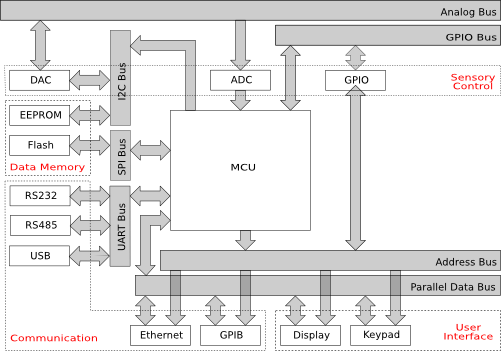Difference between revisions of "Multi-purpose Embedded System"
Jump to navigation
Jump to search
(New page: ==Architecture== ===Hardware=== Image:Mpes hw archi.png *MCU **MCU can be 8-bit/16-bit/32-bit **MCU should have sufficient RAM (i.e. no external RAM required) **MCU should have progra...) |
|||
| Line 10: | Line 10: | ||
**Use serial bus (I2C/SPI) to expand data memory to save I/O pins | **Use serial bus (I2C/SPI) to expand data memory to save I/O pins | ||
**Need a file system to access the data | **Need a file system to access the data | ||
| − | **EEPROM | + | **EEPROM for small block of re-writable data |
| − | **Flash | + | **Flash for large block of re-writable data |
*Communication | *Communication | ||
**RS232 for short distance one-to-one communication with PC | **RS232 for short distance one-to-one communication with PC | ||
Revision as of 01:52, 26 November 2008
Architecture
Hardware
- MCU
- MCU can be 8-bit/16-bit/32-bit
- MCU should have sufficient RAM (i.e. no external RAM required)
- MCU should have program Flash (i.e. no external program flash required)
- Data Memory
- Use serial bus (I2C/SPI) to expand data memory to save I/O pins
- Need a file system to access the data
- EEPROM for small block of re-writable data
- Flash for large block of re-writable data
- Communication
- RS232 for short distance one-to-one communication with PC
- RS485 for longer distance networked communication
- USB for USB communication with PC
- Ethernet for Internet connectivity
- GPIB for automated test equipment
- User Interface
- Graphical displays (LCD, VFD, etc.)
- Keypad for input
- Sensory Control
- ADC for analog feedback signals
- DAC for analog control signals
- GPIO for digital feedback and control signals
